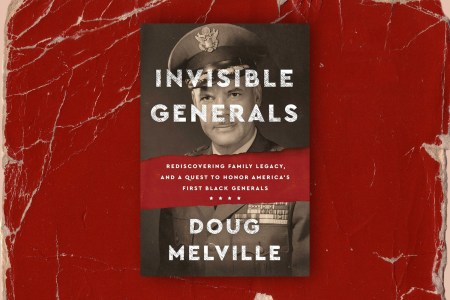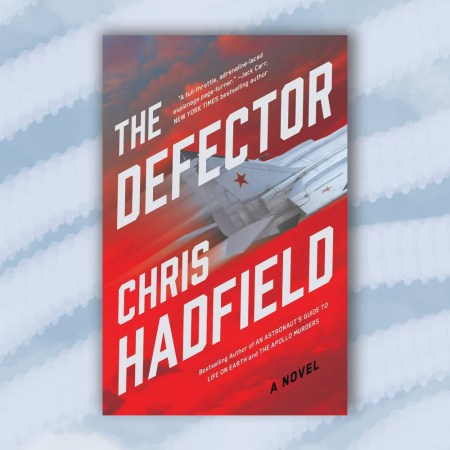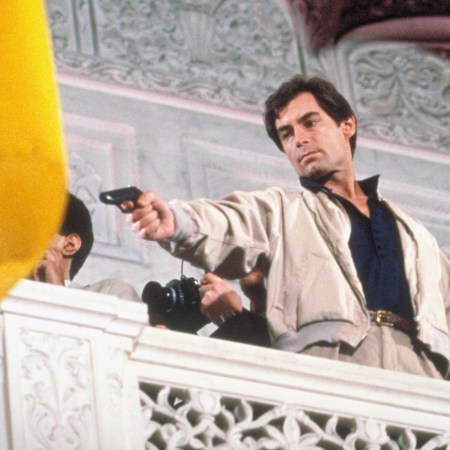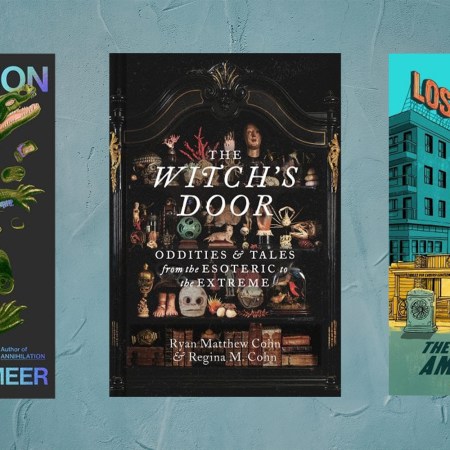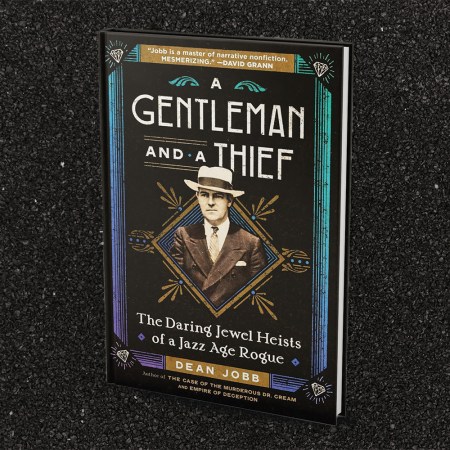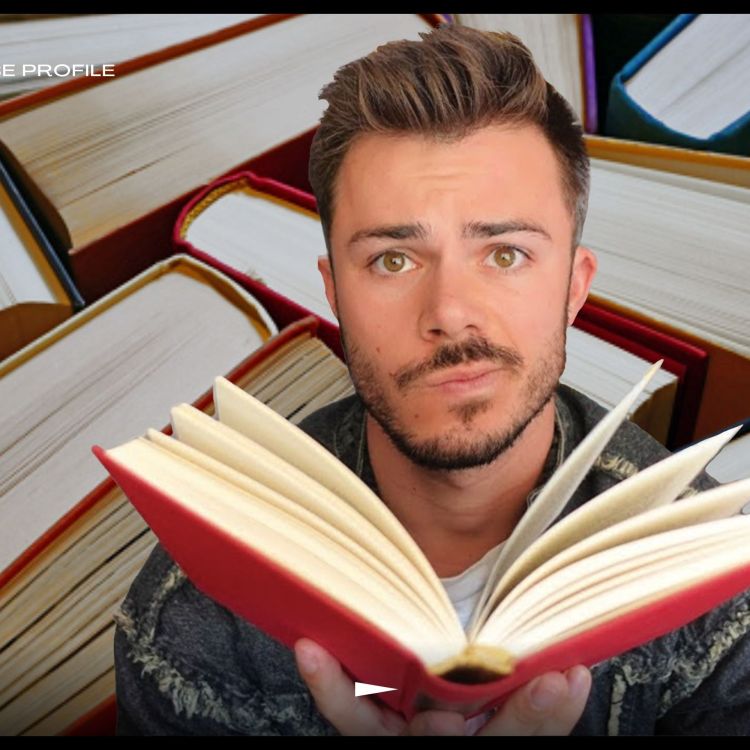There are many ways to win a war, and the traditional weapons used in battle are only one of the many tools. Libraries probably aren’t the first thing to come to mind as an essential wartime resource, but a new book exploring espionage during World War II makes an inspired case for that very argument.
The book in question is Elyse Graham’s Book and Dagger: How Scholars and Librarians Became the Unlikely Spies of World War II. Graham’s research shows how some academics became unlikely spies during the war and how libraries turned out to have crucial information to the Allies’ war effort. It’s a striking look at the different techniques used on and off the battlefield and the contributions made by experts in unlikely fields.
InsideHook spoke with Graham about the origins of her book, Book and Dagger’s connection to the events recounted in the film Oppenheimer and the history of the OSS and the CIA.
InsideHook: What first drew you to writing about the OSS’s academic side?
Elyse Graham: I write a lot about the history of universities. And I noticed that during the 1950s and 1960s, all of the recruits to the CIA were coming from history and literature departments at universities. I thought, “What’s up with that?,” and it turned out all of their professors had been spies during World War II.
There was a very direct door from history and literature departments to the CIA for a long time because the people who were teaching had literally been spies fighting the Nazis. It turned out to be an amazing story — and a story that turns out to have a lot to teach us about today’s world and about the value of libraries, not just as centers of community and education, but as things that are integral to national security.
I found a lot of the small details especially fascinating, like the account of the OSS going into the New York Public Library’s collection of maps and essentially commandeering them, or the way that trade journals proved to be very useful in terms of intelligence. Was there anything that particularly surprised you as you researched this book?
I was surprised by how real spy craft works. The spies that we see in the movies are these ripped guys carrying lots of gadgets, but in real life that wasn’t how it happened at all. Carrying a weapon or a gadget would blow somebody’s cover, so you’d go to a spy training camp and be taught to kill someone with a folded newspaper or a makeup compact. You would be selected if you were someone who would be overlooked. And that’s still the case with spy craft today.
One of the recent directors of the CIA said that a good spy is someone who wouldn’t even be noticed by his waiter. And you see ex-spies talking today about how, if you want to take a picture of a building, rather than wandering by with a buttonhole camera — because that’s actually more likely to get noticed — you should walk up with a camera and just take the picture pretending to be a lost tourist. That itself is your disguise.
It was really cool to look at all of these spy training manuals and see the nitty gritty of how it was done. But even the fighting manuals were interesting. I got a collection of them from the war, and I had our department administrative assistant try some of the holds on me. She almost broke my thumb. It was fantastic.
Is some of this information classified even now, decades later? Or were you able to find most of what you were looking to cover in the book?
I was able to look at declassified material — some of it declassified very recently. The real challenge when you do archival work like this is you often have to become a kind of gumshoe yourself. The things in the archives are not one-to-one with the things in the catalogs. There’s a lot of stuff that’s badly indexed, partly for historical reasons, if you go to the National Archives. The OSS indexing was done with the help of former OSS agents. And maybe through their own unconscious biases or otherwise, they indexed the names of all of the men but not the names of the women. So if you’re looking for a woman OSS agent, you can’t look her up according to her name. You have to use other methods to try to dig up what can be a tremendous amount of information, you just won’t find it under her name.
Sometimes, so there was information I used in the book that belongs to libraries but hasn’t been put on the catalog because it can take decades for stuff that a library owns to make it onto the catalog. Librarians have a limited amount of time. So you have to go by word of mouth to find out that something is there. Come to the people who guard that resource with gifts, sometimes not dissimilar methods to the ones that actual spies used in order to get highly prized materials during World War II.
I would imagine you started work on this before a film about the Manhattan Project became a huge cultural moment. What was it like to see something you were covering become that much more widely discussed?
Most of the people in this book are men, but of course I was fascinated with the stories of women who worked for the OSS as well. Not as many women who were present in Los Alamos were present in Oppenheimer. I know the director had to pick and choose what he could present.
I’m a huge nerd for that stuff. And one of my mentors is a historian of the bomb himself. And I’m sure he geeked out at the movie; so did I.
The movie, which was fantastic, showed the scientific work to produce the bomb. But of course they needed to read the latest scientific journals from Germany and elsewhere, which were not being sent to the United States during the war. This book is partly about how those scientific journals got out of Germany and into American hands and how Niels Bohr and other scientists themselves got out of Germany and into the United States. So it’s a backstory to the story that you see on the screen. Moments in history are a bit like people — the more you get to know them, the more they sort of open up other corridors and passages.
There are a couple of recurring figures in Book and Dagger, including anthropologist Carleton S. Coon, who seems to represent many different aspects of how science and academia can be used for racist ends. Did you have a sense going into the book of some of the people who might have prominent positions within it?
I love spy thrillers. And one thing that I love in fiction is when there’s a subplot that represents how the main plot could go wrong. Coon’s story is not only tied into the story of these other people, but he represents the way that the building of American intelligence in World War II could have gone wrong. He did his darndest to bring his need to be the center of the story, his willingness to do things like kidnap the sons of villagers in order to get them to give him tactical intelligence, his eagerness at the end of the war to start an academy of assassins to extrajudicially murder people in foreign countries who might become a problem later on. That could have been one way that American intelligence went during World War II. It didn’t, remarkably, but to leave him out of the story would be both to diminish the actual accomplishments of people who managed to do it right and to diminish the moral risks of spycraft itself.
Everybody in this story is making huge moral decisions. Do you sink a ferry with civilians on it that’s carrying material that the Germans might use to make a deadly weapon, an atomic bomb? Do you do that if your friend is on the ferry, which was a real thing. Do you do it if your mother is on the ferry, which a character in the book has to deal with. You are about to engage in sabotage against an installation, and you come across a random person skiing past you on the mountain. Do you kill him because he’s a witness?
It’s after World War II, and you are recovering all of the great art the Nazis have stolen in the hopes of either putting it in Hitler’s bathroom or selling it to get weapons or melting it down to make bullets. Do you take that treasure back to the United States to pay for the cost of being in the war? Up until then, that was what was done. You have a bunch of art that was made by Nazis, not particularly good art, you just happen to have it — watercolor paintings by Julius Streicher and things like that. Do you keep it for posterity and historical study, or do you burn it?
There are huge moral problems confronted by people out in the field, partly because they were out in the field and couldn’t call home to get advice from headquarters. Carelton Coon made decisions that I think you and I would not make if we were out in the field. S. Lane Faison was the art historian who had the problem of whether to burn the Nazi art. He made a decision that I would have made but most historians would not have. I would have chucked it in the fire; I would have enjoyed that, but that’s why I’m not entrusted with those kinds of decisions.
Other people had ingenious solutions — have dinner with your mom and drug her so she doesn’t go on to the ferry but you’re not warning her beforehand. There were an incredible range of responses to these problems, but ultimately if you were in the field, it was down to you.
Was there one aspect of researching this that was particularly challenging?
There’s such an incredible amount of information out there. And, of course, the most wonderful stories are the hidden ones. I was aware while I was writing the book that when you’re writing a book about any historical period, you’re writing for an audience who knows a lot of the stories already. You want to give them something new while meeting the requirements of the genre. That pressure to find new things involved an incredible amount of information that had to be read through in order to pull the story together. That was probably the hardest part, but there’s always the delight of actually finding something new.
How many years did you spend researching this before starting to write it?
It’s hard to say. I’ve been reading about universities for a long time. When I was a student at university, I made learning how to be a student at that university another course of study. Universities are places where you learn various signs of belonging, among other things, which was of use to the spies because then they could go into the field disguised as themselves.
They could get the trust of Nazis who were delighted to be talking to Harvard men because they thought that they too were men of a certain distinction — “We’re all gentlemen here” — and so the people they were talking to couldn’t possibly pin them for the things they were confessing to because gentlemen don’t do that to gentlemen. They turned out to be wrong, but you can weaponize prestige in a certain way.
Over time, I became a professor myself and learned about these things that you can do to find your way around the archives — and about how people hold grudges and stab each other in the back in academia. I started to see how the puzzle pieces of being a spy and being a professor might fit together.
In 2020, I published an article for the Princeton Alumni Weekly that was the result of this research into why so many people were tapped to become CIA agents from literature departments. That was really the start of my dedicated interest in universities and spycraft. But I’d been writing about universities in World War II even before then.
A New Book Explores the History of a Groundbreaking Military Family
Doug Melville explored his own family’s history in “Invisible Generals”One of the things you discuss in Book and Dagger is the controversy after the war about whether or not the CIA should have a library. That feels like it foreshadowed some of the larger cultural discussions happening in the United States now. When did that modern connection dovetail with the historical one?
The Nazis called libraries “literary bordellos,” and they burned books in bonfires. Not very well — books don’t actually burn that easily — but they still made a show of doing it. I think this story has a lot to teach us about the value of libraries, not just as centers of community and education, not just as places that educate good readers who turn out to be remarkable intelligence analysts, but also as something that’s integral to national security.
When the Allies wanted to invade North Africa, they were cut off from information from from the Axis and from neutral Europe. They had to use what they already had, and what they already had wasn’t that good. Their libraries were decades behind libraries in Europe because it was taken for granted that scholars would simply go to Europe to find whatever they needed. Suddenly they were cut off from Europe, and the scholars had to make do with what they had. After Pearl Harbor, there were only two complete sets of maps of Japan in the entire United States.
What’s astonishing is not just how little these scholars were given to work with but how much they were able to do with it. They were able to go into the New York Public Library and into the Library of Congress ,where they were basically locked in the basement until the invasion of North Africa, and use old whaling maps — maps that were incredibly outdated — together with things like telephone directories to find out what the soldiers would see when they landed, where there would be Red Cross facilities and where there were buildings that needed to be taken over immediately to prevent any Germans or French people who were there from sending out wires to their superiors.
They didn’t know what they would see there. One of the victories that these libraries helped the Allies to achieve was giving them eyes on the ground in the days before Google Maps, and they did that with incredibly outdated materials. After the war, one of the first things that the U.S. government did was update its libraries by putting in place all of the intelligence they had been missing during the war itself.
That was this big program where certain universities were asked to specialize in certain countries; it was the beginning of what’s known as area studies in the United States. The Library of Congress became much more well funded and much more important. This history is important because it tells us why we have these libraries in the first place and also why we need libraries.
Because we’re on the eve of the 80th anniversary of World War II, it’s important to understand the role that libraries played in helping us to achieve this victory and the importance that libraries have — again, not just as centers of community and education, but as places that store information as centers of national security and national intelligence.
This article was featured in the InsideHook newsletter. Sign up now.

